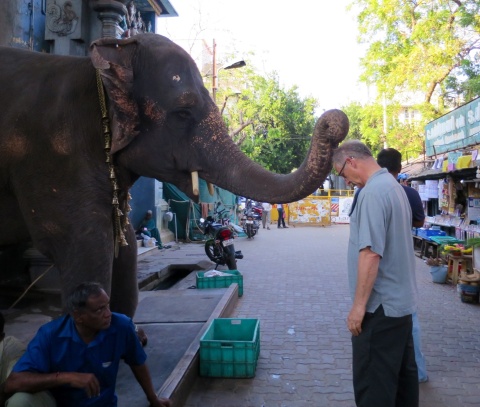Lakshmi’s Blessing
February 12, 2014 § Leave a comment
To say that Ganesh is ubiquitous and beloved in Nepal is understatement, way under. The living presence of gods and goddesses is taken for granted, made visible everywhere there is a pillar, shrine, doorway, gate, niche in a tree, hump of native rock protruding the brick pavement. They are offered incense, anointed with red pigment, sprinkled with orange and yellow petals, smeared with fat, sung to, fed, clothed, washed, stepped over, circumambulated, worn featureless by countless loving hands. On cards, posters and decals, carved in wood, cast in bronze or plastic, suggested in stone, cutesy stuffed toys, fierce and friendly, the images are simultaneously divine and symbols of divinity.
In a big Indian city like Kolkata the images are harder to see through the exigent overburden of daily life, but they are there on a taxi driver’s dashboard, the back of a pedal rickshaw, in jewelry, set into the wall in front of a hospital, for sale in smart shops. Images of Ganesh take many forms and styles, from classic to baroque to pop, kitsch, abstract and post modern, some barely recognizable, but the elephant is always there in the curve of an ear or trunk. In homes he joins the pantheon of gods with their consorts and vehicles just inside the front door, in a corner of the sitting room, on a bedroom wall. A chubby boy will be affectionately called Ganesh. Shopkeepers invoke him at the start of a business day to bring good trade.
In Pondicherry, as in other cities in the south, real elephants live at temples where they are painted, adorned, fed, displayed and worshiped. They will give a blessing, a touch on the head with the trunk in exchange for money or food. The paper money goes directly from the trunk to the hand of the keeper, but coins disappear to be retrieved later. The female temple elephant in Pondicherry is named for Lakshmi, wife of Vishnu, goddess of wealth. Her solitary, restricted life has given her the neurotic, repetitive movements of kept animals, the rocking and pacing seen in zoos, but she makes good money.



